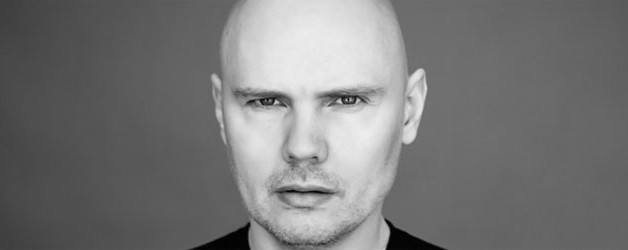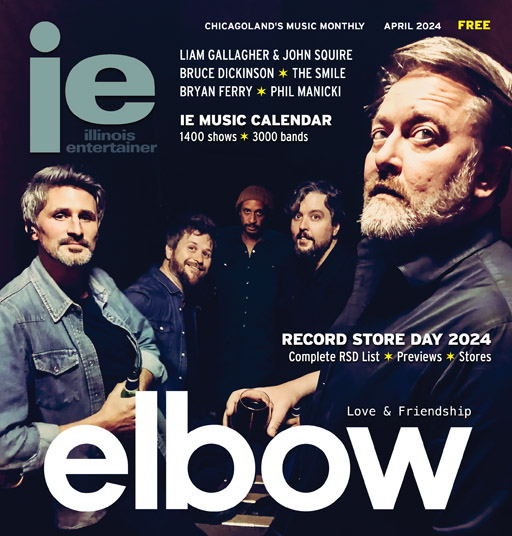Feature: Billy Corgan
Billy Corgan: Days Of Future Past
It’s a busy time to be Billy Corgan.
The alt-rock veteran is tireless, gearing up for a seemingly endless amount of projects, releases, and initiatives. Corgan recently released a limited run of an experimental record titled AEGEA, which he recorded back in 2007. He also received the Vanguard Award at the initial Alternative Press Music Awards this past July in Cleveland, presented to him by fellow Chicago entertainer CM Punk. On the Smashing Pumpkins front, Corgan, along with Pumpkins 2.0 mainstay Jeff Schroeder and Mötley Crüe drummer Tommy Lee, just finished work on Monuments to an Elegy, which proceeds Day For Night as the first of two forthcoming Pumpkins full lengths. (During our chat, Corgan mentions aiming for a December 9th release for Monuments.) And then there’s the forthcoming reissue of Pumpkins turning point Adore, which will be followed by a Machina reissue down the line that collects both Machina/The Machines of God and its Internet-only counterpart Machina II/The Friends & Enemies of Modern Music into one comprehensive package.
There’s also a slew of additional releases on the docket, including Corgan’s experimental Siddhartha and Sundays With Rumi projects, as well as early plans for a wealth of bedroom demos from the artist’s initial forays into music in the ‘80s. That’s to say nothing of his involvement with Madame ZuZu’s, the Highland Park tea shop Corgan opened in late summer 2012. Or Resistance Pro, the wrestling organization Corgan oversees, a reality show for which is in development at AMC. And at the end of the week, the artist will take the stage at Ravinia for a career first, where he’ll be performing selections from throughout his entire body of work. That means Pumpkins songs alongside ZWAN material and cuts from Corgan’s various solo endeavors.
It’s a safe bet that’s not even all of what’s on deck, either.
“When I was a kid, I would make a lot of demos and stuff, so I kind of got in this groove of making a lot of music,” Corgan recalls when we meet at a Starbucks in Highland Park, IL. The interview was set to take place at his tea shop nearby, but a scheduling mix-up – no doubt a byproduct of the singer’s hectic schedule–resulted in a coffee shop compromise instead. “And I always thought, that’s what you did. Painters paint and sketch, and then when you get into the business part of the music, then it’s like, ‘Wait wait, slow down, only this song matters, these other 51 don’t matter.’ And then of course in the middle of the Pumpkins’ sort of first era, we had a lot of success with B-sides and stuff like that. Then they loved – then they (said), ‘Oh, more, more, more!’ So then I got sort of cranked back up into working. And then, when things didn’t go as well, then it was almost like, people were like, ‘Wait, you’re putting out too much.’ So I started shelving albums.
“So it’s more been my relationship with how the world takes in information,” Corgan continues of his frenetic work ethic. “And I’m not saying I had some future vision plan, in this regard. But, what I mean is that, the way the world works with social media actually is more commensurate to the way I work as an artist, which is in pieces and obsessive moments and I kind of discard things, and maybe somebody’s interested in the discarded thing 30 years later, where in the time they’d be like, ‘Wait, I don’t want to hear your dreck.’ And now they want to hear the Mellon Collie dreck or something.”
If you’re reading about the Smashing Pumpkins in IE, you almost certainly know the story by now. Or at least the broad strokes. Launched onstage at the Metro as a four piece – including guitarist James Iha, bassist D’arcy Wretzky, and drummer Jimmy Chamberlin on October 5th, 1988. Twelve years later, three-fourths of that collective – with Melissa Auf der Maur filling in for the recently vacated Wretzky-would close things out in a seemingly endless performance on that very same stage. After that, Corgan waded into short lived ventures like alt-supergroup ZWAN, as well as Corgan’s synth-driven solo album, The Future Embrace. In 2007, following declarations of intent in both The Chicago Tribune and the Chicago Sun-Times, Corgan, along with Chamberlin, reformed the Pumpkins, with newcomers Schroeder and Ginger Reyes filling in the for the long-departed Iha and Wretzky. In 2009, Chamberlin departed again, with newcomers Nicole Fiorentino and Mike Byrne joining on bass and drums, respectively, alongside Corgan and Schroeder for 2012’s Oceania. And that’s just the CliffsNotes version.
The band’s shifting lineups and fluid identities are something Corgan attributes at least partially to his seemingly limitless work ethic. “Maybe if I’d only cranked out 10 songs every two years, maybe that would have made life easier for everybody. But that wasn’t the thing.” he reflects when asked about operating with the Pumpkins’ set members in the ‘90s versus the case-by-case model in play since the band’s reactivation. “I’m a little bit of a historian, and sometimes when I think about epic battles, Roman battles, like – just imagine what it was like to try to feed those armies. Or where do those armies sleep. The logistical aspects. And that’s sort of what it’s like to be in a band. There’s sort of a logistical aspect that sort of is counterintuitive to getting four people in a room and making music.”
If Corgan is a historian, it shows in his work reissuing the Pumpkins’ original catalogue. Already, expansive box sets of Gish, Siamese Dream, Pisces Iscariot, Mellon Collie and the Infinite Sadness, and The Aeroplane Flies High have dug deep into the archives, offering up B-sides of B-sides, live cuts, demos, and more. Next month (September 23), 1998’s Adore will see release via Universal, offering up its own bounty of deep cuts and unheard fare. Among them is the oft-referenced but never before surfaced Adore treatment of “Let Me Give the World to You,” which was first heard on 2000’s Machina II digital release in a reworked form. Also of note are Matt Walker’s livened reimaginings of songs like “Daphne Descends,” “Crestfallen,” and more. Elsewhere, the acoustic Sadland demo of “The Tale of Dusty and Pistol Pete” lives up to its sorrowful title, while the Chicago Recording Company demo of emotional centerpiece “For Martha” reveals a vulnerable work in progress.
“Luckily there’s enough time now where I don’t have any emotional bias to (Adore),” Corgan reveals of the divisive album, which in the late ‘90s marked a turning point for the band with both fans and critics. “I really can just listen to the music and say, ‘Is that effective? Was what I was trying to say – or what I thought I was trying to say – does that come across?’
“And it’s funny, because something like ‘Ava Adore,’ which was the first single off the album, in 1998, didn’t do well on the charts,” the artist continues. “The video was too weird. If that song came out today, it’s actually fairly contemporary. The video’s fairly contemporary. It’s kind of funny. So, hindsight sort of softens my opinion. But I don’t have an emotional disappointment or reflection on it anymore,” It’s a softer take than one might be used to from Corgan. Yet maybe after all the rage and melancholy, acceptance was bound to present itself sooner or later.
“I can look at it very impassively,” he affirms, still speaking of Adore. “Like you look at a picture of yourself from 20 years ago and go, ‘Why am I wearing that shirt?’ and, ‘That’s a good haircut.’ That’s how I look at this stuff now.”
For more from Billy Corgan, including his thoughts on direct-to-fan models, plans for the Machina reissue, and much, much more, check out the full Dynasty Podcasts audio interview player below.
-By Jaime “Black” de’Medici
Billy Corgan appears live Saturday, August 30th at Ravinia, for a special evening of music from throughout his career (Tickets Here)










